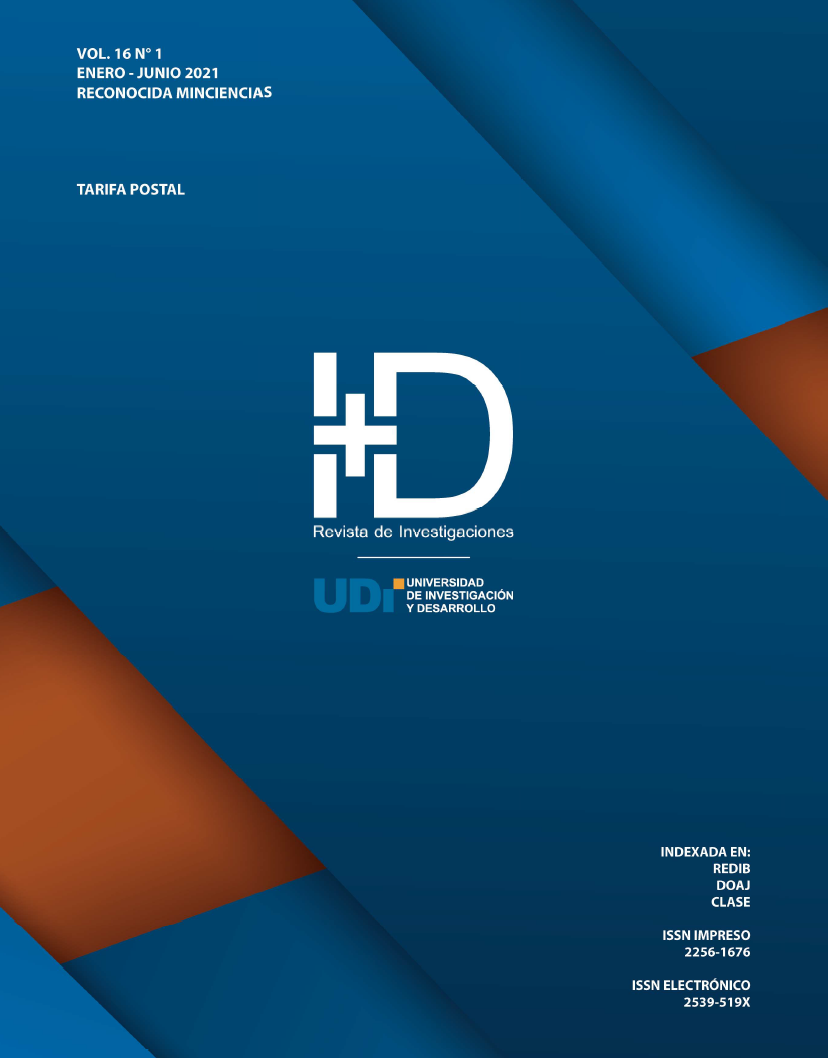Capture the idea: Playful activity for teaching and strengthening design thinking
DOI:
https://doi.org/10.33304/revinv.v16n1-2021003Keywords:
Educational game, design thinking, product design, creativity, playfulAbstract
This research study aims to present the design of the playful activity "Capture the Idea", as well as its validation, in an attempt to prove that this active learning activity favors the perception of the teaching-learning method in the subject Administración de Operaciones I in the topic of product design. For the design, the methodology Gamificación Canvas was used, and it was based on the Mindshake Design Thinking Evolution 62 model. For its validation, a causal and quasi-experimental study was carried out for a sample of 20 students where two Likert surveys were applied. The results allow us to accept the proposed hypothesis, concluding that the use of this strategy improves the student's perception in a positive way by an average of 15%. Additionally, it was evident that students feel that the class is more stimulating, enjoyable, and engaging compared to a purely masterful class.Downloads
References
Aguilar-Fernández, M., Delgado-Rodríguez, A., García-Jarquín, B. y Acosta-Gonzaga, E. (2017). Conocimiento e innovación tecnológica en la ingeniería industrial. Revista de Ingeniería Industrial, 1(1), 19-40.
Alaminos, A. y Castejón, J. L. (2006). Elaboración, análisis e interpretación de encuestas, cuestionarios y escalas de opinión. Editorial Marfil S.A.
Albert, M. (2007). La investigación educativa: claves teóricas (J. Manuel, ed.). McGraw-Hill.
Barreto, J., Teherán, G., Turizo, E. y Londoño, N. (2019). Diseño de productos y servicios: Flying mind. VII encuentro de la Red Iddeal.
Boden, M. A. (1998). Creativity and Artificial Intelligence. Artificial Intelligence, 103(1-2), 347–356. https://doi.org/10.1016/S0004-3702(98)00055-1
Brown, T. y Wyatt, J. (2010). Design Thinking for Social Innovation. Essentials of Social Innovation. https://ssir.org/articles/entry/design_thinking_for_social_innovation
Escamilla, J., Fuerte, K., Venegas, E., Fernández, K., Elizondo, J. y Román, R. (2016). Gamificación. Observatorio de Innovación Educativa del Tecnológico de Monterrey. 1-36. http://eduteka.icesi.edu.co/pdfdir/edutrends-gamificacion.pdf
Frias-Navarro, D. (2019). Apuntes de consistencia interna de las puntuaciones de un instrumento de medida. https://www.uv.es/friasnav/AlfaCronbach.pdf
Hernández, R., Fernández, C. y Baptista, M. (2014). Metodología de la investigación. Mcgraw-Hill/ Interamericana Editores. http://observatorio.epacartagena.gov.co/wp-content/uploads/2017/08/metodologia-de-la-investigacion-sexta-edicion.compressed.pdf
Kaplan, R. y Saccuzzo, D. (2006). Pruebas psicológicas: Principios, aplicaciones y temas. (Sexta Ed.). Thomson.
Marín-González, Y., Montes, J. O., Hernández-Riaño, H. E. y López-Pereira, J. M. (2010). Validación de la lúdica como herramienta metodológica complementaria en la enseñanza del método de producción tradicional y del método de producción de la teoría de restricciones (TOC) para el manejo de los entornos multitarea. Ingenieria y Universidad, 14(1), 97–115.
Montoya, M., Monsalve, J. C. y Gaviria, J. M. (2014). Aplicación de un caso de estudio para la enseñanza de ingeniería de requisitos basado en lúdica en pregrado. Encuentro Internacional de Educación en Ingeniería ACOFI 2014. https://www.researchgate.net/publication/317837825
Pombo, F. y Tschimmel, K. (2005). Sapiens and Demens in Design Thinking–Perception as Core. Proceedings of the 6th International Conference of the European Academy of Design EAD. https://www.researchgate.net/publication/228878635
Ramírez, D. (2019). Importancia del diseño en la ingeniería. https://utelesup.edu.pe/blog-ingenieria-civil-y-desarrollo-inmobiliario/importancia-del-diseno-en-la-ingenieria/
Rauth, I., Köppen, E., Jobst, B. y Meinel, C. (2010). Design Thinking: An Educational Model Towards Creative Confidence. DS 66-2: Proceedings of the 1st International Conference on Design Creativity (ICDC 2010).
Rodríguez, D. y Rodríguez, A. (2013). Innovación por design thinking: Creatividad Para los negocios. https://www.academia.edu/40238365/Innovación_por_Design_Thinking_Creatividad_para_los_negocios
Ruiz, L., Gordo, M., Fernández, M., Boza, A., Cuenca, L., Alarcón, F. y Alemany, M. (2015). Implementación de actividades de aprendizaje y evaluación para el desarrollo de competencias genéricas: un caso práctico de aplicación de técnicas de Pensamiento de Diseño, y evaluación mediante rúbricas, de las competencias de Creatividad, Innovación y E. In-Red 2015 - Congreso Nacional de Innovación Educativa y Docencia en Red. https://doi.org/10.4995/INRED2015.2015.1639
Streiner, D. L. (2003). Being Inconsistent About Consistency: When Coefficient Alpha Does and Doesn’t Matter. Journal of personality assessment, 80(3), 217-222. https://doi.org/10.1207/S15327752JPA8003_01
Tschimmel, K., Loyens, D., Soares, J., Oraviita, T., Barroca, A., Marinova, B., Santos, J., Carenzo, M. y Manzini, S. (2017). Design Thinking Applied to Education y Training. www.d-think.eu
Valdrich, T. y Cândido, A. (2018). Mapa de empatia como proposta de instrumento em estudos de usuários: aplicaçâo realizada na biblioteca pública de Santa Catarina. Revista ACB: Biblioteconomia em Santa Catarina, 23(1), 107-124.
Zandoval, F. y Zilber, M. (2014). Innovation and Business Model: A Case Study About Integration of Innovation Funnel and Business Model Canvas. Revista Brasileira de Gestao de Negocios, 16(53), 616–637.












